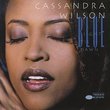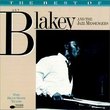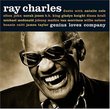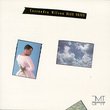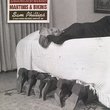| All Artists: Benjamin Britten, English Chamber Orchestra, London Symphony Orchestra Title: Britten: The Young Person's Guide to the Orchestra; Variations on a Theme of Frank Bridge; Simple Symphony Members Wishing: 0 Total Copies: 0 Label: Decca Release Date: 10/25/1990 Genre: Classical Styles: Chamber Music, Historical Periods, Modern, 20th, & 21st Century, Symphonies Number of Discs: 1 SwapaCD Credits: 1 UPC: 028941750921 |
Search - Benjamin Britten, English Chamber Orchestra, London Symphony Orchestra :: Britten: The Young Person's Guide to the Orchestra; Variations on a Theme of Frank Bridge; Simple Symphony
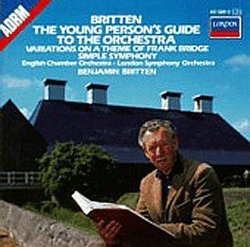 | Benjamin Britten, English Chamber Orchestra, London Symphony Orchestra Britten: The Young Person's Guide to the Orchestra; Variations on a Theme of Frank Bridge; Simple Symphony Genre: Classical
In this century, few composers have been as well-equipped to perform their own works as Benjamin Britten. An accomplished pianist and conductor, he was used to working in front of the microphone and was able to record most... more » |
Larger Image |
CD DetailsSynopsis
Amazon.com essential recording In this century, few composers have been as well-equipped to perform their own works as Benjamin Britten. An accomplished pianist and conductor, he was used to working in front of the microphone and was able to record most of his own works, some more than once. Despite the continuing popularity of these scores with other conductors, the composer's own versions have held up very well. Britten's account of the Young Person's Guide to the Orchestra, recorded in 1963 with the London Symphony, shows a masterly touch. Many of the subtler details of the writing emerge in this performance, which, for all the felicities of expression and nuance it achieves, moves along rather smartly. It's a spirited treatment, quite modern-sounding in places, with the LSO clearly having great fun. The recording, made in Kingsway Hall, is very bright and exhibits a touch of brittleness at the high end. --Ted Libbey Similarly Requested CDs
|
CD ReviewsBritten conducts Britten Robert E. Nylund | Ft. Wayne, Indiana United States | 05/18/2006 (5 out of 5 stars) "British composer Benjamin Britten (1913-1976) was a master composer AND a master conductor. Not only did he make numerous recordings conducting his own compositions, he also conducted very competent performances of other composers, including J.S. Bach and Robert Schumann. He was an exclusive London/Decca artist throughout his life and the recordings in this compilation were originally released on LPs on that label. They have now been superbly remastered for really high fidelity sound on compact disc. The CD features a wonderful color photograph of Britten on the cover. He was a musician's musician, who challenged both singers and instrumentalists to strive harder. In an interview, Britten admitted that his music was often difficult to perform correctly. That became apparent when this writer had the opportunity to sing some of Britten's choral music, including "Ceremony of Carols," "Rejoice in the Lamb," and "War Requiem." His choral music IS singable, despite the great challenges, and not as "impossible" to sing as portions of Beethoven's "Missa Solemnis," which I have also sung. The 1963 recording of "A Young Person's Guide to the Orchestra" is a benchmark performance by the fabulous London Symphony Orchestra, truly one of the greatest of all orchestras. The individual performers, as well as the sections, all get a chance to "shine" as Britten uses a theme by Henry Purcell (1659-1695) to present a series of variations highlighting all of the sections and some of the individual instruments in the orchestra. Some recordings included narration; this performance simply presents the music in topnotch performances with great virtuosity throughout. The sound is exceptionally clear, too, making it possible to thoroughly enjoy this inspiring performance. The compilation also includes Britten's delightful "Simple Symphony," one of his earliest and most popular works. Using the excellent string section of the English Chamber Orchestra, Britten was able to give a performance that again can set the standards for all future performances of this charming, sometimes very moving, music. The second movement is noted for its pizzicato playing; this extremely delicate and intricate music is performed with great precision by the British musicians. The third movement is, by far, the longest and most intense part of the symphony; Britten took a rather simple but profound melody and built upon it, until it reached an almost agonizing intensity. There are also outstanding moments throughout Britten's "Variations on a Theme of Frank Bridge." Again using a theme and variations approach, Britten's recording with the English Chamber Orchestra not only showcases the outstanding performers but shows his incredible variety as he utilized numerous musical forms. Some of this music is enchanting and delightful. There are also sections which are very dramatic and even agonizing in their intensity. Frank Bridge, who died in 1941, was Britten's teacher and mentor; remarkably, the student has eclipsed the teacher in fame and popularity, but there's no question the student remained deeply devoted to his teacher, even after Bridge was no longer living. For those unfamiliar with Britten's music, this compilation is a very good introduction to the wonderfully tonal but imagination music he produced during his all-too-short life. One should also listen to a recording of the four orchestral interludes from the opera "Peter Grimes," and then go on to listening to the complete opera (perhaps the greatest opera every written in English), followed by "War Requiem" and some of the other choral music he composed. " By definition...definitive Frank C. Adams | Boston, MA United States | 12/06/2003 (5 out of 5 stars) "Unlike most listeners, I bought this for the 'Frank Bridge' work; I originally had it on LP, from over 20 years ago. The variations are, I think, one of the masterpieces of 20th century music. It was his first commission to receive widesprad attention and for good reason: his mastery of string instrumentation and sonics is truly astonishing. It is a piece I constantly return to. The 'Young Person's Guide' is totally satisfying as well. Britten's interpretation is much more 'baroque' than the full orchestral sound we are used to; but it is much more convincing, particarly as the theme is by Purcell. And the 'Simple Symphony' is as charming as others have noted. All are recorded with excellent sound.Britten as interpreted by Britten has to be considered definitive!" Young Person's Guide without the talk HB | Fort Mill, SC | 03/21/2007 (5 out of 5 stars) "Britten's Young Person's Guide to the Orchestra can be performed with or without narration. I prefer without since the music speaks for itself so eloquently. The theme is by Henry Purcell and it is gorgeous. After each section plays the theme for a few seconds, variations begin with the woodwinds, strings, brass and finally percussion. The work ends with a fugue and final proclamation of the glorius theme. It is a thrilling work that all ages can enjoy. The rest of the music is also wonderful and the composer directed performances are superior in every way. Although the sound is from the analog era, it is just perfect. Amazon says the CD is essential. I totally agree."
|

 Track Listings (16) - Disc #1
Track Listings (16) - Disc #1